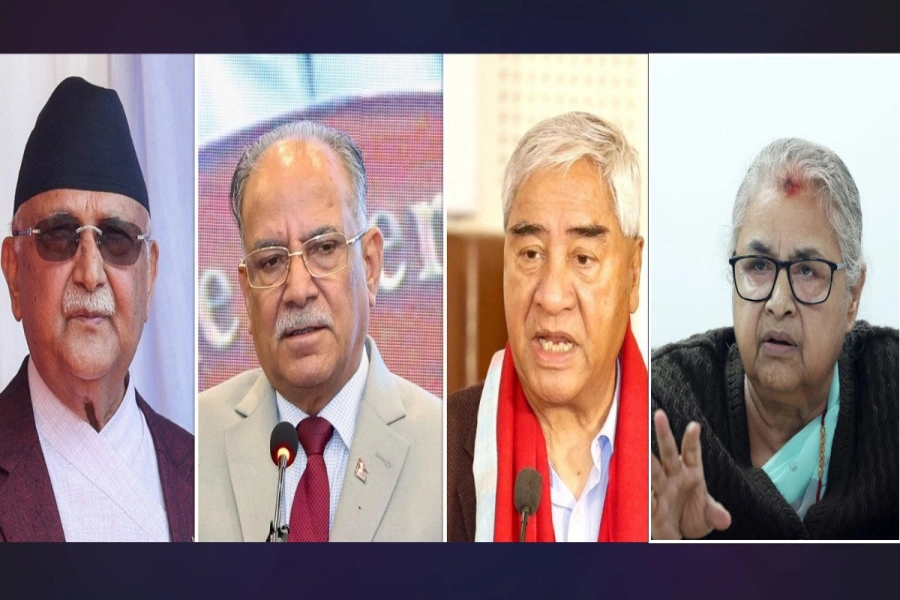China is a challenge for the US but also an opportunity. The US-China relationship is far too important.
NEW HAVEN – It wasn’t just the weather that was cold when senior US and Chinese officials convened recently in Anchorage, Alaska to try to reset their countries’ relations after four years of mounting tension. Sadly, the meeting was more reminiscent of the Cold War era than of a fresh start. That needs to change quickly – before it is too late.
Trapped in the politics of America’s bipartisan groundswell of anti-China sentiment, President Joe Biden’s team appears to be staying the course set by the previous administration, even upping the ante on the trade and technology conflict by raising human rights and geopolitical concerns, which Biden’s predecessor ignored. And China, trapped in a mindset born of a “century of humiliation,” compounded the problem with its assertive and defensive response. In full view of the media, the opening exchange was laced with charges and counter charges, with no discernible path for de-escalation.
A better way would be for both sides to go back to basics—the economics and trade issues that have long anchored the US-China relationship. That doesn’t mean dismissing other tough issues. It means reestablishing common ground and mutual trust before expanding the agenda. This is where the Biden administration needs to rethink its combative approach. On economics and trade, it has been boxed in by the “phase one” trade deal negotiated by the “former guys,” as Biden refers to the previous administration. And that is where there is greatest leverage for change.
Yes, the American public favors the phase one approach. The latest Pew Research Center survey, conducted in February, shows widespread support for a continuation of tariffs, with more people interested in getting tougher on trade with China than in building stronger ties. The unrelenting focus on China over the past four years as the source of much that ails the United States now has a firm grip on popular sentiment.
What Nepal can learn from China

But that doesn’t mean the American public’s view is correct. The phase one deal was flawed from the start, mainly because it offers a bilateral fix for a multilateral trade deficit with many countries, some 96 in 2020. Thus, the deal never delivered. It didn’t reduce the US trade deficit, and it imposed a new layer of costs on American businesses and consumers.
Just as the US trade deficit was not made in Japan 30 years ago, it is not made in China today. Unsurprisingly, in both instances, the largest share of the US trade deficit could be traced to America’s largest trading partner—Japan then, China now. But this concentration is more a reflection of comparative advantage (buying goods that can be produced more cheaply abroad than at home) and supply-chain efficiencies (assembling components and parts made in other countries) than of unfair trading practices.
But, as I have written ad nauseam over the years, the US trade deficit is the result of a deeper problem of America’s own making: a shortfall of domestic saving. America’s net national saving rate—the broadest measure of the combined depreciation-adjusted saving of businesses, households, and the government sector—is in negative territory for the first time in a decade (and only the second time on record). According to the latest available data, it averaged -0.8 percent of national income in the second and third quarters of 2020. And in light of outsize federal budget deficits, there is a good chance that national saving will plunge further.
Lacking domestic savings, the US borrows surplus saving from abroad in order to invest and grow. That, in turn, sustains an outsize balance-of-payments deficit, which averaged -3.3 percent of GDP in the second and third quarters of last year—the widest since late 2008. In exchange for foreign capital, Americans buy goods from overseas. Balance-of-payments deficits, not the so-called China problem, are the macroeconomic source of America’s overall trade deficit.
The phase one deal is a political effort to micro-manage a macro problem. Even if it worked in narrowing the bilateral trade deficit with China, the persistent shortfall of domestic saving implies that the US trade gap would be diverted to other foreign producers—which is exactly what has happened. Moreover, that trade diversion has gone to higher-cost foreign producers, the functional equivalent of a tax hike on American companies and consumers.
None of this is to say that the Biden administration should wave the white flag and surrender to China. But it needs to shift its focus and abandon the unworkable bilateral framework of the phase one deal and the tariffs that support it. What is required, instead, is a robust structural agenda that addresses the far more serious problems of intellectual property rights, innovation policy, forced technology transfer, cyber security, and subsidies to state-owned enterprises. A bilateral investment treaty (BIT) is the best way to accomplish that, as well as to scrutinize the veracity of structural grievances. Actively negotiated for a decade prior to 2017, a US-China BIT would provide a framework to resolve structural tensions while encouraging growth in both economies through expanded market access.
These are not popular arguments in the US, thanks to four years of venomous rhetoric that has convinced many Americans that China poses an existential threat. Unfortunately, America’s corrosive politics of blame and victimization is fertile ground for allegations of being mistreated by others.
But it is time for a more clear-eyed approach—especially by a new US administration that is off to such a strong start in so many important areas.
China is a challenge for the US—but also an opportunity. Unfortunately, Biden has been boxed in by his predecessor. It will take political courage, wisdom, and creativity to break with the failed approach of the past four years. The US-China relationship is far too important to do anything less.
Stephen S. Roach, a faculty member at Yale University and former chairman of Morgan Stanley Asia, is the author of Unbalanced: The Codependency of America and China.
Copyright: Project Syndicate, 2021.
www.project-syndicate.org








































